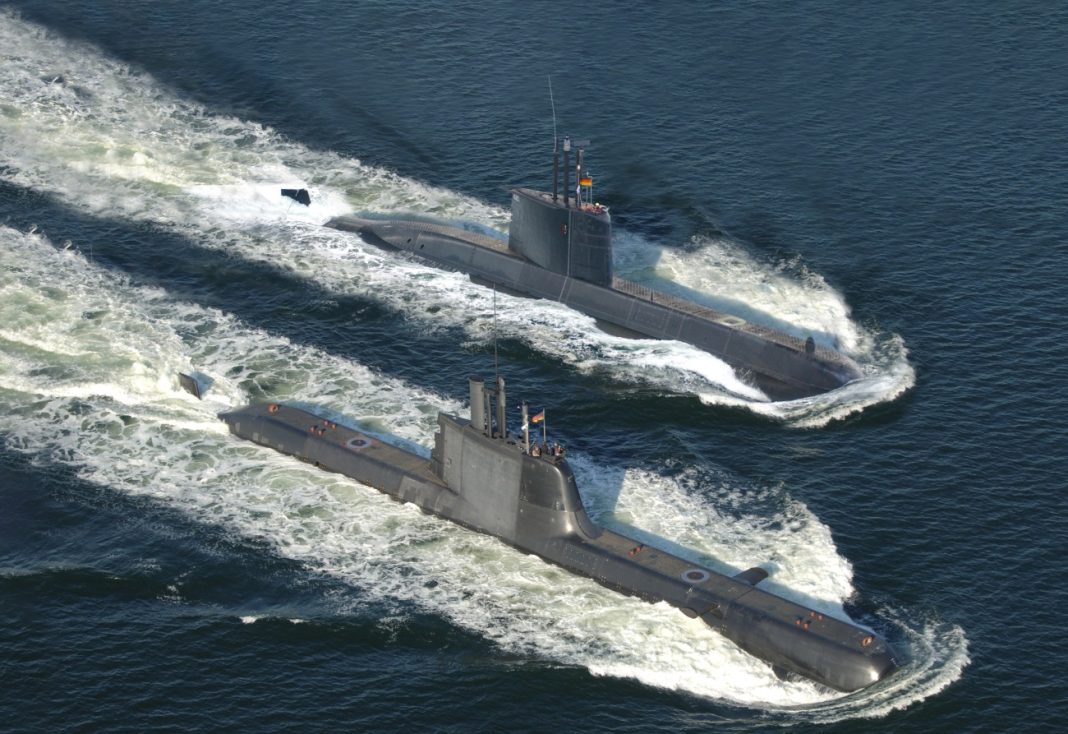The race to equip the Indian Navy with Air Independent Propulsion (AIP)-capable submarines has gained momentum, particularly following Spanish shipbuilder Navantia’s successful installation of a hydrogen-based AIP system in its S-80 class submarine. In this competitive landscape, German firm Thyssenkrupp Marine Systems (TKMS) claims to have the only proven AIP system thus far.
The Indian Navy recently concluded a field trial for its Project-75 I, which aims to enhance its submarine fleet by procuring six advanced vessels. These submarines will be equipped with AIP technology and Lithium-ion batteries, allowing them to remain submerged for extended periods and swiftly navigate to targets without detection.
TKMS’s AIP system has been validated using a German Navy submarine, whereas Navantia has tested its AIP through a combination of land and onboard systems. While the Spanish solution has undergone approximately 50,000 hours of testing and has been chosen by the Spanish Navy, it remains largely unproven against TKMS’s fuel cell-based AIP, which has a track record of successful deployment alongside Lithium-Ion batteries.
The installation of the hydrogen-based AIP, dubbed BEST (Bio-Ethanol Stealth Technology) by Navantia, in the S80 class is viewed as a significant advancement in submarine technology. This third-generation AIP system does not rely on stored hydrogen, instead generating it on demand through an innovative process using bioethanol. This capability is expected to enhance operational stealth and autonomy, as well as reduce the crew’s operational burden.
Spanish submarines equipped with this AIP technology are projected to operate underwater for up to three weeks, maintaining a minimal signature akin to those running solely on electric batteries. The Isaac Peral, part of the S80 series, ranks among the largest non-nuclear submarines globally, and with the AIP BEST technology, it is expected to assume a more formidable role in naval operations.
However, Navantia faces challenges, having experienced significant delays in its submarine projects—now reportedly 10 years behind schedule—and lacking an established export record or experience in transferring technology. Their partnership with an Indian shipyard lacking submarine construction experience raises concerns among defense analysts about the feasibility of successful collaboration.
In contrast, TKMS boasts a rich history of submarine construction, having delivered over 170 vessels over the past 75 years. Its proven models of technology transfer with countries such as South Korea, Turkey, Italy, and Israel affirm its reputation as a reliable partner. Currently, its submarines are integrated into the Indian Navy, with a collaborative history that includes the indigenously constructed Shalki class.
The strategic urgency for the Indian Navy to modernize its submarine fleet is underscored by the rapid advancements of its primary adversaries, notably China, which has been significantly expanding its naval capabilities. Furthermore, Pakistan is also enhancing its submarine fleet despite financial constraints, receiving advanced AIP-powered submarines from China.
With growing concerns about the strategic balance in underwater warfare, the Indian Navy recognizes the vital role of AIP technology in enhancing its operational capabilities. The absence of AIP-equipped submarines currently leaves India at a tactical disadvantage compared to neighboring adversaries, particularly in critical maritime zones like the eastern Indian Ocean and the Bay of Bengal.
Despite recent exercises showcasing the Indian Navy’s capacity to operate multiple submarines simultaneously, the fleet’s overall strength remains a concern. Currently, India has 16 operational conventional submarines, short of the required 24, with aging vessels increasingly nearing decommissioning dates. The planned addition of six new submarines under Project-75 I is expected to bolster the fleet’s capabilities but also highlights the necessity for timely procurement and integration of advanced technologies.
While the Indian Navy aims to address its submarine gap, the competition between Navantia and TKMS for the Project-75 I contract illustrates a broader trend of nations seeking to enhance their maritime capabilities amid rising regional tensions.





